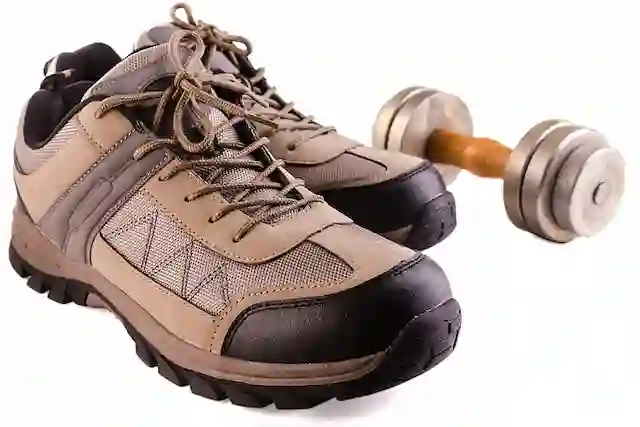Burn Calories for Weight Loss: The Ultimate Guide
Are you looking to Burn Calories for Weight Loss? Look no further. In this comprehensive guide, we’ll cover everything you need to know about burning calories for weight loss, including exercise and fitness, diet and nutrition, health and wellness, and tools and resources to help you reach your goals.
Table of Contents
Exercise and Fitness
Exercise is a crucial component of burning calories for weight loss. Here are some effective workouts to help you shed those extra pounds:
HIIT Workouts
HIIT workouts are a highly effective way to burn calories and lose weight. This workout involves short bursts of intense exercise, followed by periods of rest. HIIT workouts can be done with just your bodyweight or with equipment such as dumbbells or resistance bands. Some examples of HIIT exercises include sprinting, burpees, and jump squats.
The high intensity of the workout helps to boost your metabolism, allowing you to continue burning calories long after your workout is over. HIIT workouts are a great option for anyone looking to add variety to their exercise routine and maximize their weight loss results.
Cardio Exercises
Cardio exercises are a great way to burn calories and improve your overall health. These types of exercises get your heart pumping and your blood flowing, which can help you lose weight and reduce your risk of heart disease, stroke, and other health problems.
Examples of cardio exercises include running, cycling, swimming, and jumping rope. Aim for at least 30 minutes of cardio exercise per day to reap the benefits. If you’re new to exercise, start slowly and gradually increase your intensity over time. And remember to have fun! Find an activity you enjoy, and you’ll be more likely to stick with it.
Strength Training
Strength training, also known as weightlifting, is a great way to build muscle and lose weight. When you strength train, you’re not just burning calories during the workout, but you’re also increasing your metabolism, which means you’ll burn more calories throughout the day. Plus, the more muscle you have, the more calories your body burns even when you’re at rest.
In addition to weight loss, strength training can help you improve your overall health by increasing bone density, reducing the risk of injury, and improving balance and coordination. So if you’re looking to lose weight and get stronger, consider adding strength training to your workout routine.
Aerobic Exercise
Aerobic exercise is a popular and effective way to burn calories and lose weight. This type of exercise involves using large muscle groups in a repetitive motion for an extended period of time. Some examples of aerobic exercise include walking, running, swimming, and cycling.
Aerobic exercise can help you improve your cardiovascular health, increase your endurance and stamina, and boost your overall energy levels. It can also be a great way to reduce stress and anxiety, as well as improve your mood and mental health. Aim for at least 30 minutes of aerobic exercise per day to reap the benefits.
Yoga
Yoga is a popular form of exercise that originated in ancient India. It involves a series of poses and stretches, combined with breathing exercises and meditation, that promote strength, flexibility, and relaxation. Yoga can be practiced by people of all ages and fitness levels, and there are many different types of yoga to choose from, including vinyasa, hatha, and power yoga.
Some of the benefits of practicing yoga include reduced stress and anxiety, improved balance and coordination, and a stronger immune system. Whether you’re a seasoned yogi or a beginner, incorporating yoga into your fitness routine can help you improve your physical and mental health.
Pilates
Pilates is a low-impact workout that has been around for nearly a century. This exercise method focuses on strengthening your core muscles, improving posture, and increasing flexibility. It’s a great way to tone your body without putting stress on your joints.
Pilates can be done on a mat or with specialized equipment, like a reformer. There are many different exercises that can be done in a Pilates class, including the hundred, the roll-up, and the teaser. Whether you’re a beginner or an experienced fitness enthusiast, Pilates is a great way to improve your overall health and fitness.
Zumba
Zumba is a high-energy workout that combines dance and aerobics to help you burn calories while having fun. Developed in the 1990s, Zumba has become a popular fitness trend, with classes offered in gyms and studios around the world.
During a Zumba class, you’ll move to the beat of Latin-inspired music, performing a variety of dance moves that work your entire body. The workout is designed to be easy to follow, so even if you have no dance experience, you can still enjoy the benefits of Zumba.
In addition to burning calories and toning your muscles, Zumba can also help improve your coordination and boost your mood. So if you’re looking for a fun and effective way to get in shape, give Zumba a try!
Cycling
Cycling is an excellent way to burn calories for weight loss while enjoying the great outdoors. Whether you’re cycling on a stationary bike or hitting the trails, this low-impact exercise can help you burn up to 500 calories per hour. Cycling is also a great way to improve cardiovascular health, build endurance, and tone your leg muscles.
To get the most out of your cycling workout, aim to cycle for at least 30 minutes per day, and vary your intensity levels to keep your body challenged. Don’t forget to wear a helmet and follow safety guidelines to ensure a safe and enjoyable ride.
Diet and Nutrition
In addition to exercise, diet and nutrition play a key role in burning calories for weight loss. Here are some tips to help you stay on track:
Calorie Deficit
Calorie deficit is the foundation of any successful weight loss program. To lose weight, you need to burn more calories than you consume. That’s where calorie tracking comes in. By using a calorie tracker, you can keep track of the calories you consume and the ones you burn during exercise, ensuring that you maintain a consistent calorie deficit. This will help your body tap into its stored fat reserves, leading to weight loss over time. Aiming for a moderate calorie deficit of 500-1000 calories per day is a safe and effective way to lose weight and keep it off.
Balanced Diet
Eating a balanced diet is crucial when it comes to weight loss. A balanced diet includes whole foods such as fruits, vegetables, lean protein, and healthy fats. These foods are packed with essential nutrients and fiber that help you feel full and satisfied. Avoiding processed and high-sugar foods is also important because they can lead to weight gain and other health problems.
When planning your meals, make sure to include a variety of healthy foods and avoid relying on processed or fast foods. By eating a balanced diet, you’ll feel energized, improve your overall health, and be on your way to achieving your weight loss goals.
High Protein Foods
Protein is a key nutrient that can help you feel full and satisfied, while also promoting muscle growth and repair. That’s why it’s important to include protein-rich foods in your diet. Foods such as chicken, fish, eggs, and legumes are excellent sources of protein, and can help you maintain muscle mass while losing weight.
In addition to being filling, protein can also help regulate your appetite, which can prevent overeating and promote weight loss. So, make sure to incorporate protein-rich foods into your meals to support your weight loss goals and overall health.
Low Carb Foods
If you’re looking to maintain stable blood sugar levels and avoid overeating, low carb foods can be helpful. Vegetables, nuts, and seeds are great options. But don’t cut carbs out completely, as they’re an important source of energy. Instead, focus on choosing healthy sources of carbs like whole grains and fruits. By making small changes to your diet, you can reap the benefits of low carb foods without depriving your body of essential nutrients. Remember to listen to your body and find a balance that works for you.
Fruits and Vegetables
If you want to stay healthy and shed some pounds, make sure to eat plenty of fruits and vegetables. These nutrient-dense foods are rich in fiber and antioxidants, which can boost your immune system and promote weight loss. Strive to eat at least 5 servings of fruits and vegetables each day, and try to vary the colors to get a wide range of nutrients. Whether you prefer raw or cooked, there are countless ways to incorporate fruits and vegetables into your diet.
Meal Planning
If you’re looking to stick to your diet and avoid unhealthy foods, meal planning is a great tool. Start by mapping out your meals for the week ahead of time. This will help you stay on track and avoid the urge to reach for junk food. Once you have your plan, prep your ingredients in advance to make healthy eating a breeze. Chop your veggies, cook your grains, and portion out your snacks so that you have healthy options ready to go. With a little bit of foresight and planning, you can set yourself up for success on your healthy eating journey.
Intermittent Fasting
Intermittent fasting is a popular weight loss strategy that involves limiting your food intake to specific windows of time. By doing this, you may burn fat and shed extra pounds. However, it’s important to speak with your doctor before beginning a fasting regimen to ensure it’s safe for you.
They can help you determine the best approach based on your medical history and current health status. Keep in mind that intermittent fasting is not a magic solution for weight loss, and should be combined with other healthy habits like regular exercise and a balanced diet for best results.
Health and Wellness
Good health and wellness habits are essential for long-term weight loss and overall well-being. Here are some tips to help you stay healthy and happy:
Sleep
Getting enough sleep is crucial for maintaining good health. Aim for 7-8 hours of sleep per night to avoid weight gain and other health issues. When you don’t get enough sleep, your body produces more hunger hormones, which can lead to overeating and weight gain.
Lack of sleep can also affect your mood, cognitive function, and immune system. To promote better sleep, establish a bedtime routine, avoid electronics before bed, and create a dark and quiet sleep environment. By prioritizing sleep and making it a regular part of your routine, you can support your overall health and well-being.
Stress Management
If you’re feeling stressed, it can take a toll on your health and even cause weight gain. That’s why it’s important to manage stress in healthy ways. Relaxation techniques such as meditation, deep breathing, or yoga can help reduce stress and improve overall health.
These practices can activate the relaxation response in your body, reducing stress hormones and promoting a sense of calm. To make relaxation a regular part of your routine, find a quiet space to practice, and set aside a few minutes each day. By taking care of your mental health, you can support your physical health and well-being.
Hydration
Proper hydration is vital for maintaining a healthy weight and overall well-being. To stay hydrated, make sure you drink at least 8 cups of water per day. This can help flush out toxins, support digestion, and keep your body functioning optimally.
On the other hand, sugary drinks such as soda and juice can be dehydrating and provide empty calories. To reduce your intake of these beverages, opt for water, herbal tea, or other low-calorie drinks instead. By prioritizing hydration and making water your go-to beverage, you can support your weight loss and overall health goals.
Tracking Progress
Keeping track of your progress is an effective way to stay motivated and achieve your weight loss goals. To monitor your progress, consider using a journal or app to track your weight, measurements, and exercise habits. This can help you identify patterns, celebrate your successes, and make adjustments as needed.
By seeing your progress over time, you can stay motivated and on track, even when the going gets tough. Just remember to be patient with yourself and focus on the small wins along the way. With persistence and dedication, you can make meaningful progress towards a healthier, happier you.
Rest and Recovery
Taking time for rest and recovery is key to staying healthy and avoiding injury. After workouts, give your body the chance to heal and recharge by taking breaks and getting plenty of rest. Overtraining can lead to fatigue, burnout, and injury, so it’s important to listen to your body and take breaks when needed.
Consider incorporating restorative practices like stretching, foam rolling, and massage into your routine to support your recovery. By making rest and recovery a priority, you can keep your body in top shape and achieve your fitness goals safely and effectively.
Body Composition Analysis
If you’re looking to improve your health and achieve your weight loss goals, consider getting a body composition analysis. This assessment can determine important factors like your body fat percentage and muscle mass. By understanding your body composition, you can set realistic goals and make targeted changes to your diet and exercise routine.
Body composition analysis can be done through various methods like bioelectrical impedance, skinfold measurements, or DEXA scans. Talk to a healthcare professional or fitness expert to determine the best method for you. By taking a holistic approach to weight loss and focusing on body composition, you can optimize your health and well-being.
Mental Health
Taking care of your mental health is just as important as taking care of your physical health. Prioritize self-care by practicing stress-management techniques, getting enough sleep, and engaging in activities you enjoy. If you’re struggling with mental health issues, don’t hesitate to seek professional help.
A therapist or counselor can provide valuable support and guidance. Mental health issues can affect anyone, regardless of age, gender, or background, so it’s important to prioritize your well-being. By taking care of your mind and body, you can lead a happier, healthier life.
Tools and Resources
There are a variety of tools and resources available to help you reach your weight loss goals. Here are some examples:
Fitness Apps
Looking for support on your fitness journey? Consider using fitness apps like MyFitnessPal, Fitbit, or Nike Training Club. These apps can help you track your exercise, set goals, and stay motivated. By logging your workouts and progress, you can see how far you’ve come and get an extra boost of motivation to keep going. Additionally, many apps offer guided workouts and personalized plans to help you reach your goals. With so many options available, you’re sure to find an app that works for you.
Wearable Technology
Wearable technology, like fitness trackers and smartwatches, can assist in monitoring activity levels, heart rate, and other crucial metrics for weight loss and overall health. By wearing a device on your wrist, you can keep track of how much you’re moving throughout the day, and how that contributes to your overall health goals.
Many wearable tech devices offer features such as heart rate monitoring, step counting, and sleep tracking. By utilizing these tools, you can gain a better understanding of your body and make informed decisions about your health. Consider investing in wearable technology as a way to support your weight loss journey and enhance your overall health.
Fitness Trackers
Garmin and Apple Watch offer a variety of features to help you stay on top of your fitness goals. By tracking your exercise, heart rate, and other metrics, you can monitor your progress and stay motivated. Additionally, many fitness trackers allow you to set goals for weight loss and overall fitness, and offer reminders to help you stay on track. With wearable technology, you can take control of your fitness journey and get the support you need to succeed. So, consider investing in a fitness tracker to support your health and wellness goals.
Calorie Tracking Apps
MyFitnessPal and Lose It! offer a convenient way to monitor your food intake and ensure you stay within your calorie goals. By logging your meals and snacks, you can get a better understanding of your eating habits and make informed decisions about what to eat.
Additionally, many calorie tracking apps offer features like recipe calculators and barcode scanners to make tracking even easier. Whether you’re looking to lose weight, maintain your current weight, or simply stay on top of your nutrition, calorie tracking apps can be a useful tool.
Recipe Websites
Recipe websites like Skinnytaste and EatingWell offer a wide range of healthy and delicious meal ideas to help you stay on track with your diet. By browsing these websites, you can find recipes that are both nutritious and flavorful, making it easier to stick to your healthy eating goals. Many recipe websites also offer filters and search tools to help you find recipes that meet your specific dietary needs and preferences. With so many recipes to choose from, you’re sure to find meals that you’ll love.
Fitness Communities
Being part of a fitness community, whether online or in-person, can provide a powerful source of motivation and accountability for your weight loss journey. By surrounding yourself with like-minded individuals, you can share tips and advice, celebrate successes, and work through challenges together. Whether you join a fitness group on social media or participate in group workouts at your local gym, being part of a community can make your weight loss journey more enjoyable and effective. So, reach out to others who share your goals and interests, and start building a support network to help you achieve your best self.
References
Bennett, C. (2021, June 23). 11 Proven Ways to Lose Weight Without Diet or Exercise. Healthline. – SOURCE.
Dinsdale, H. (2022, February 8). The Benefits of HIIT Workouts for Burning Calories. Verywell Fit. – SOURCE.
Mayo Clinic Staff. (2020, October 8). Strength training: Get stronger, leaner, healthier. Mayo Clinic. – SOURCE.







